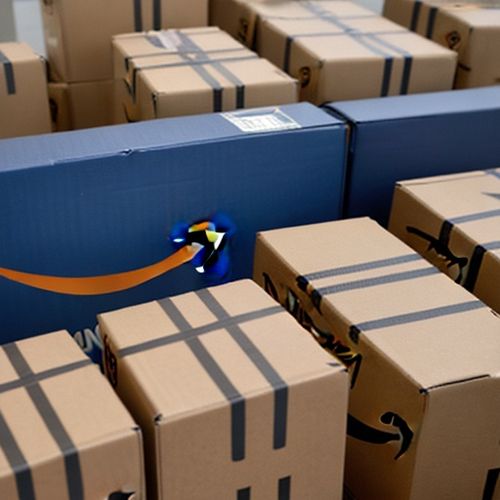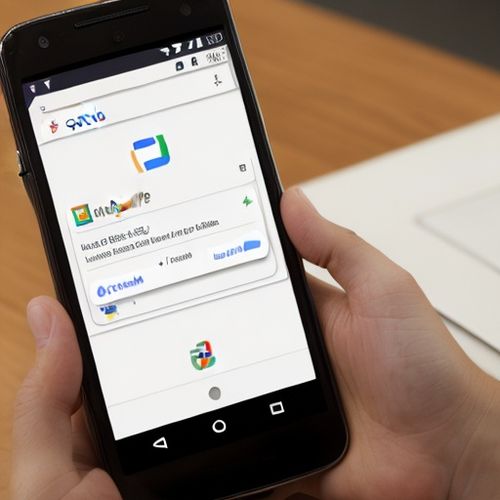In the vast and ambitious realm of space exploration and technological innovation, Amazon has taken a significant step forward with the successful launch of the first 27 satellites for its Kuiper constellation. This milestone marks the beginning of Amazon's ambitious plan to create a space-based internet network, positioning itself as a formidable contender in the rapidly growing market dominated by Elon Musk's Starlink service. As the race to provide global internet coverage from space heats up, Amazon's entry into this domain promises to reshape the future of connectivity and accessibility.
The Launch: A Promising Start
On a late Monday evening, the Cape Canaveral Space Force Station in Florida witnessed a historic moment as a United Launch Alliance (ULA) Atlas V rocket soared into the sky, carrying the first batch of Kuiper satellites. This successful launch is a testament to Amazon's commitment to expanding internet access through innovative means. The 27 satellites represent just the beginning of what is planned to be a constellation of 3,226 satellites, designed to provide high-speed internet to underserved and unserved communities around the world.
While this initial launch is a significant achievement, it is important to note that Amazon's Kuiper project still has a long way to go compared to its competitor, Starlink. Elon Musk's SpaceX has already launched over 8,000 satellites through 250 different missions, establishing a robust network that currently serves more than 5 million users. Despite this disparity, Amazon's entry into the space internet market is a bold and ambitious move that could potentially transform the landscape of global connectivity.
Amazon's Vision: Serving the Underserved
Amazon's Kuiper project is not just about competing with Starlink; it is about fulfilling a broader mission to bridge the digital divide. Jeff Bezos, Amazon's founder, has emphasized that there is "room for lots of winners" in the satellite internet space. This vision aligns with Amazon's commitment to leveraging technology to improve lives, particularly in areas where traditional internet infrastructure is lacking.
The focus on underserved and unserved communities is a crucial aspect of Amazon's strategy. By targeting regions with limited or no access to reliable internet, Amazon aims to provide essential connectivity that can unlock economic opportunities, enhance education, and improve overall quality of life. This mission is particularly relevant in today's digital age, where internet access is increasingly seen as a fundamental right rather than a luxury.
The Road Ahead: Challenges and Opportunities
While the successful launch of the first 27 satellites is a promising start, Amazon's Kuiper project faces several challenges on its path to completion. One of the most pressing issues is the production and deployment of the remaining satellites. The project is reportedly working through production problems, which could potentially delay the timeline for filling out the constellation. Tory Bruno, CEO of the ULA, has indicated that there could be as many as five more Kuiper launches this year, but the pace of deployment will be crucial in determining the project's success.
Another significant challenge is the regulatory environment. The Federal Communications Commission (FCC) has set a deadline for Amazon to launch the first half of the network by mid-2026. Meeting this deadline will require not only efficient production and deployment but also navigating the complex regulatory landscape that governs space activities. Compliance with FCC regulations is essential for the project's long-term viability.
Despite these challenges, Amazon's Kuiper project also presents numerous opportunities. The potential market for space-based internet services is vast, with millions of people around the world still lacking reliable access to the internet. By tapping into this market, Amazon can not only fulfill its mission of serving underserved communities but also capture a significant share of the growing space internet market. Additionally, the technological advancements developed through the Kuiper project could have broader applications in other areas of Amazon's business, such as logistics and e-commerce.
The Broader Implications: A New Frontier in Connectivity
Amazon's entry into the space internet market has far-reaching implications for the tech industry and beyond. As one of the world's largest and most influential companies, Amazon's involvement in this domain signals a new era of innovation and competition. The race to provide global internet coverage from space is not just about technological prowess; it is about shaping the future of connectivity and ensuring that no one is left behind in the digital age.
The competition between Amazon and SpaceX also highlights the importance of collaboration and cooperation in the space industry. While both companies are vying for market share, their efforts also contribute to the broader goal of expanding internet access and improving global connectivity. This competition can drive innovation and push the boundaries of what is possible in space-based technologies.
Moreover, the success of Amazon's Kuiper project could have significant geopolitical implications. By providing internet access to underserved regions, Amazon can help bridge the digital divide and promote economic development in areas that have long been marginalized. This effort aligns with global initiatives to improve digital infrastructure and ensure that the benefits of the internet are accessible to all.
A Bold Leap into the Future
The successful launch of the first 27 Kuiper satellites marks a significant milestone in Amazon's ambitious plan to create a space-based internet network. While the project faces numerous challenges, including production issues and regulatory hurdles, the potential benefits are immense. By focusing on underserved and unserved communities, Amazon is positioning itself as a leader in the global effort to bridge the digital divide.
As Amazon navigates the complexities of the space internet market, its commitment to innovation and community-driven development offers a promising path forward. The race to provide global internet coverage from space is just beginning, and Amazon's entry into this domain is a bold leap into the future of connectivity. With its vast resources, technological expertise, and vision for a more connected world, Amazon has the potential to transform the landscape of global internet access and ensure that the benefits of the digital age are felt by everyone, everywhere.

By Jessica Lee/Apr 30, 2025

By George Bailey/Apr 30, 2025

By Lily Simpson/Apr 30, 2025

By Michael Brown/Apr 30, 2025

By Laura Wilson/Apr 30, 2025

By Emily Johnson/Apr 30, 2025

By James Moore/Apr 30, 2025

By Megan Clark/Apr 30, 2025

By George Bailey/Apr 30, 2025

By Emily Johnson/Apr 30, 2025

By Daniel Scott/Apr 30, 2025

By Laura Wilson/Apr 30, 2025

By Daniel Scott/Apr 30, 2025

By Samuel Cooper/Apr 30, 2025

By Sarah Davis/Apr 30, 2025

By William Miller/Apr 30, 2025

By Emma Thompson/Apr 30, 2025

By Olivia Reed/Apr 30, 2025

By Laura Wilson/Apr 30, 2025

By Sarah Davis/Apr 30, 2025